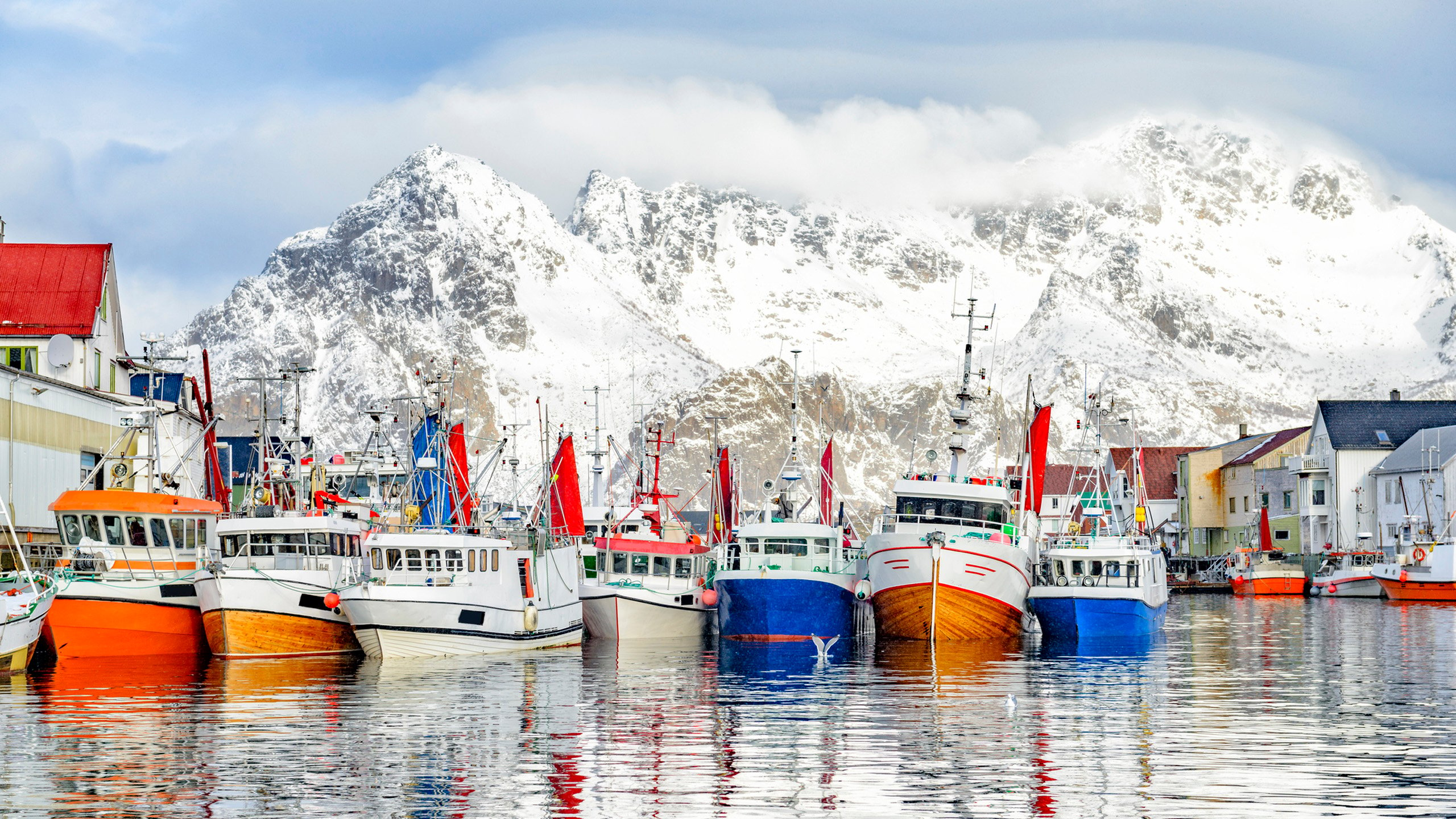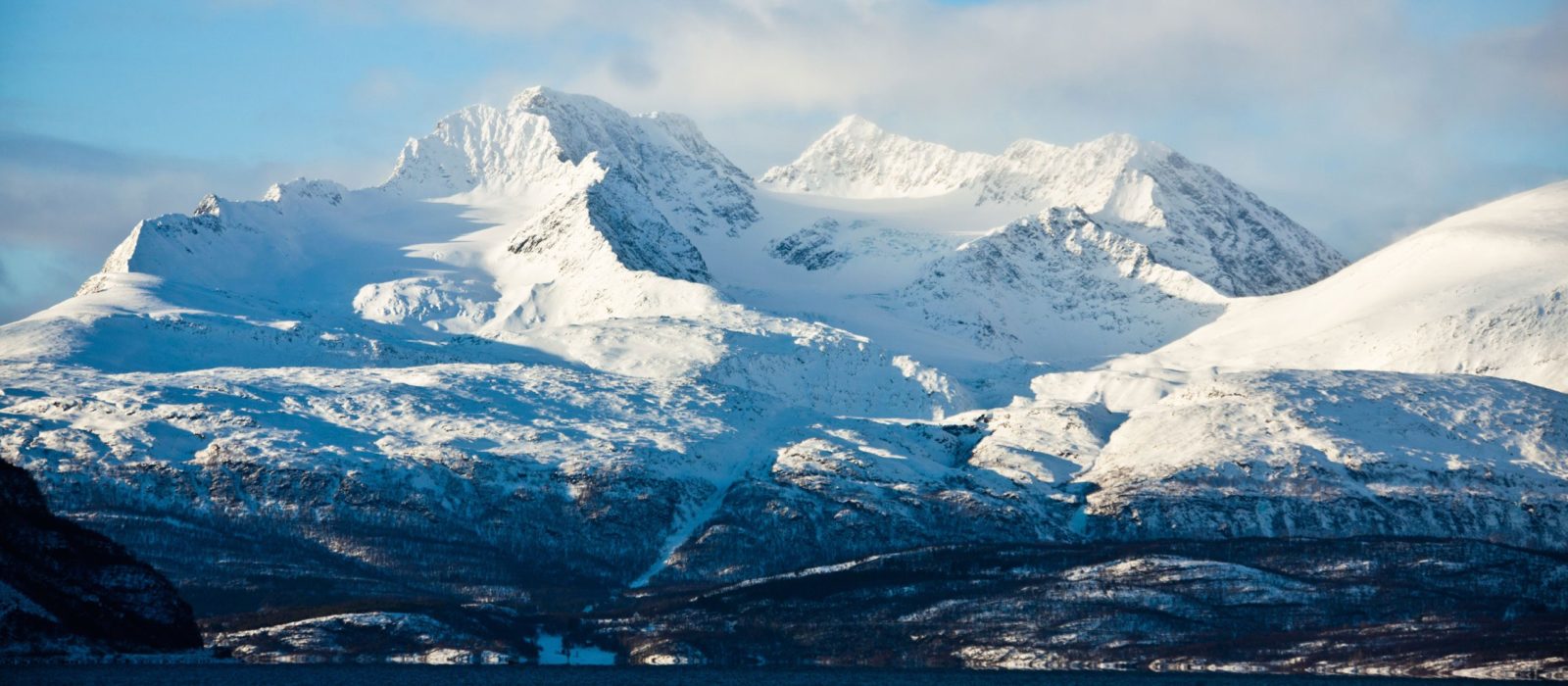Published on: December 1st, 2017
Last modified: March 21st, 2024
In winter, Norway transforms into a glittering wonderland of snow-laden forests and dramatic glaciers. With deep night skies illuminated by the magical Northern Lights, Scandinavia is a magical place during the cooler months.
From December to February, the temperatures are very low and there is very little daylight. There's still plenty of things to do though, so here's our guide to visiting Norway in winter (or, discover the best time to visit for you).

Get outdoors

Hit the snow
Most of the northern part of the country is blanketed in snow between November and March, so there’s loads of opportunity for skiing, snowmobiling and sledging. Go adventuring across the white islands of the Svalbard archipelago on snowmobiles. You can also explore the arctic tundra on foot, or on the back of a dog sled, but remember to wrap up warm!

On the water
For the perfect vantage point, discover the wintery landscape from on board a private boat as you glide through the breath-taking fjords, frozen islands and charming fishing villages. Feel the ice-cold air on your face as you cruise along the waterways between the wild Lofoten Islands in the Arctic Circle, and the fierce Svalbard Islands which lie between Norway and Greenland. Keep your eyes open for the local wildlife along the way, and perhaps even take some time to visit some of the islands’ beautiful villages.

Explore the glaciers
Among the most astounding sights in the Svalbard islands are the otherworldly glaciers and blue ice. As you travel into the most remote areas, you may even spot the remains of old hunter cabins. Energetic explorers might want to hike out into the wilds of Spitsbergen, surrounded by rugged mountains and ice. Visit the Norwegian Glacier Museum in Fjærland to learn all about them.

Polar bear spotting
If seeing polar bears in the wild is on your bucket list, then you should definitely spend time in the Svalbard islands in winter. Board a cruiser and travel along the west coast of Spitsbergen and visit a variety of spots with plenty of time for photographs along the way. Numbering around 2500, there are more polar bears living on the islands than people.

See the Northern Lights
The darkest months of winter, December and January, offer you the most chance to see the <a href=”https://www.jacadatravel.com/europe/norway/travel-guides/how-to-see-the-northern-lights-in-norway/”>Northern Lights</a>, but you’ll also want to work closely with an experienced guide who will be able to take you to the best viewing spots. Whether you’d prefer to head as far north as possible, out to the Lofoten Islands, or the wilderness outside Tromso, there are plenty of great backdrops for the aurora borealis. Plan ahead and watch the forecasts, but be aware that you also need a little luck on your side.


How cold does it really get?
Over the winter months most of the country is blanketed in snow, but you’ll find that the temperatures can vary quite significantly depending on which part of Norway you’re visiting. The inland areas experience very cold temperatures, sometimes lower than -40°C. And the further north you go, the lower temperatures are combined with strong winds, snow and extreme frost. The fjords and coastal areas don’t get nearly as cold, and many of them in the west won’t even ice over thanks to the warm Gulf Stream. In some of these areas the temperature hardly ever drops below freezing.
Our top example trips...
Whatever you want from your trip to Norway in the winter, our team of expert travel designers are here to help.




